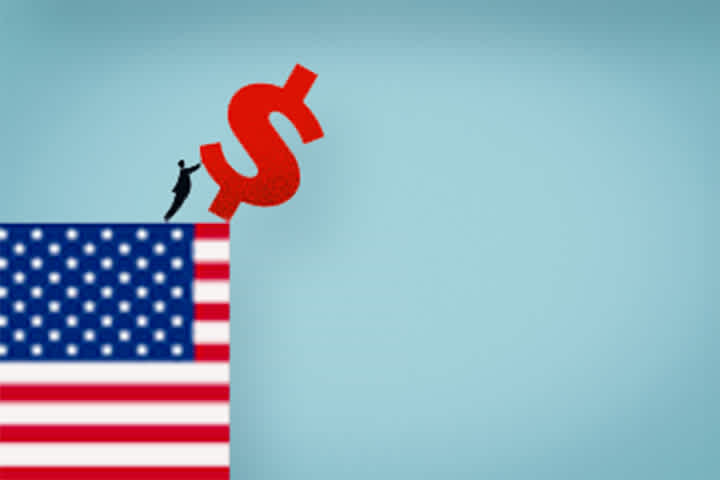Can I invest even if I do not have a large sum of money available?
Keytrade Bank
keytradebank.be
January 18, 2021
5 minutes to read
Over beleggen bestaan heel wat misverstanden. Een van de grootste is dat je rijk moet zijn. 43% van de Belgen vindt dat ze niet genoeg geld heeft om te beleggen, blijkt uit een study by J.P. Morgan Asset Management, 43% of Belgians believe they do not have enough money to invest.
So how much money do I need in order to start investing 'properly'? 1,000 euros? 100,000 euros? 1 million euros? The correct answer is: 25 euros per year.
Investing small amounts: the basics
Investing your money in just one or a handful of shares is not a such good idea. Investing is not the same as gambling or speculating. There are a number of basics you should consider, regardless of whether you are investing a small or large amount. Spreading your investments is the most important basic rule.
- Spreading between different investment products. This means you spread your money between different shares and/or bonds. This limits the risks when some investments underperform.
- Spreading over time. This means you do not invest all your available money in one go. The stock markets keep going up and down. By investing a little bit every month, every 3 months or every year, you can absorb peaks and troughs over time. This gives you a more balanced potential return in the long run.
- Spreading over different countries, regions, themes and sectors. Investing all your money in renewable energy or Chinese shares is not a good idea. Geographical spreading is also essential to manage the risk.
How to invest small amounts
You can't buy hundreds of different shares and/or bonds on a small budget. The transaction costs alone would completely outweigh any potential return.
The easiest solution? Periodic deposits into investment funds. We list the advantages here:
1. An investment fund is a type of basket of dozens or sometimes hundreds of different shares and/or bonds. An investment fund allows you to invest in them all at once rather than buy them separately. As well as being convenient, this spreads your money across different companies and leads to significant savings in transaction costs.
2. Investing periodically enables you to avoid entering the market at the ‘wrong time’, i.e. when the stock markets are at their peak. Nobody can predict the stock market. Periodic investments allow you to invest a small amount every month, quarter or year regardless of whether you think the stock markets are about to go up or down. This spreads your risks over time.
3. An investment fund is managed by a team of investment experts. This team constantly weighs up the risks and opportunities, monitors the economic climate, makes investment decisions based on figures rather than sentiment, and so on. This means you do not have to have much investment knowledge yourself, and you only need to spend the minimum amount of time on your investments. The investment experts will do the job for you.
4. Every investor is unique. You may be a rather cautious investor yourself. You may also prefer to take more risks in order to achieve a higher return. Periodic investments are adjusted to the investor's speed and scale: cautious, balanced, bold, sustainable or à la carte. The à la carte option allows you to choose from 40 carefully selected investment funds.
5. Investments are something you undertake for the long term. The longer you invest, the higher the potential return. Although the stock markets may fluctuate (significantly) along the way, stock market price data since 1900 shows an upward trend in the long term. It is therefore advisable to continue to invest in periods when the stock market is down. If you want to take a break at any point, you can always change the composition of your regular investment plan or stop altogether.
Start investing periodically now from 25 euros a year
Look after the pennies and the pounds will look after themselves
It is definitely worth investing small amounts. The reason is the principle of compounding, or a return on your return. Albert Einstein called it the eighth wonder of the world.
We would like to explain this with a few examples. Let's consider an average annual return of 1, 3 and 5%. (Over the past 120 years, equities have yielded an average annual return of 5.2%. Over the past 10 years, this has been 7.6%. Note that past performance is not indicative of future results.)
| empty-header | empty-header | empty-header | empty-header | empty-header | empty-header |
|---|---|---|---|---|---|
Annual return of 1% | after 1 year | after 3 years | after 5 years | after 10 years | after 15 years |
25 euros per month | 301,63 | 914,01 | 1538,76 | 3156,37 | 4856,89 |
50 euros per month | 603,26 | 1828,02 | 3077,51 | 6312,75 | 9713,79 |
25 euros per quarter | 100,63 | 304,92 | 513,34 | 1052,96 | 1620,21 |
25 euros per year | 25,25 | 76,51 | 128,8 | 264,17 | 406,45 |
| empty-header | empty-header | empty-header | empty-header | empty-header | empty-header |
|---|---|---|---|---|---|
Annual return of 3% | after 1 year | after 3 years | after 5 years | after 10 years | after 15 years |
25 euros per month | 304,92 | 942,87 | 1620,21 | 3502,27 | 5688,5 |
50 euros per month | 609,84 | 1885,73 | 3240,42 | 7004,54 | 11 377,01 |
25 euros per quarter | 101,89 | 315,03 | 541,31 | 1169,87 | 1899,75 |
25 euros per year | 25,75 | 79,59 | 136,71 | 295,19 | 478,92 |
| empty-header | empty-header | empty-header | empty-header | empty-header | empty-header |
|---|---|---|---|---|---|
Annual return of 5% | after 1 year | after 3 years | after 5 years | after 10 years | after 15 years |
25 euros per month | 308,25 | 972,87 | 1707,24 | 3898,23 | 6710,07 |
50 euros per month | 616,5 | 1945,74 | 3414,47 | 77796,46 | 13 420,13 |
25 euros per quarter | 103,16 | 325,53 | 571,13 | 1303,33 | 2242,04 |
25 euros per year | 26,25 | 82,75 | 145,05 | 330,17 | 566,44 |


